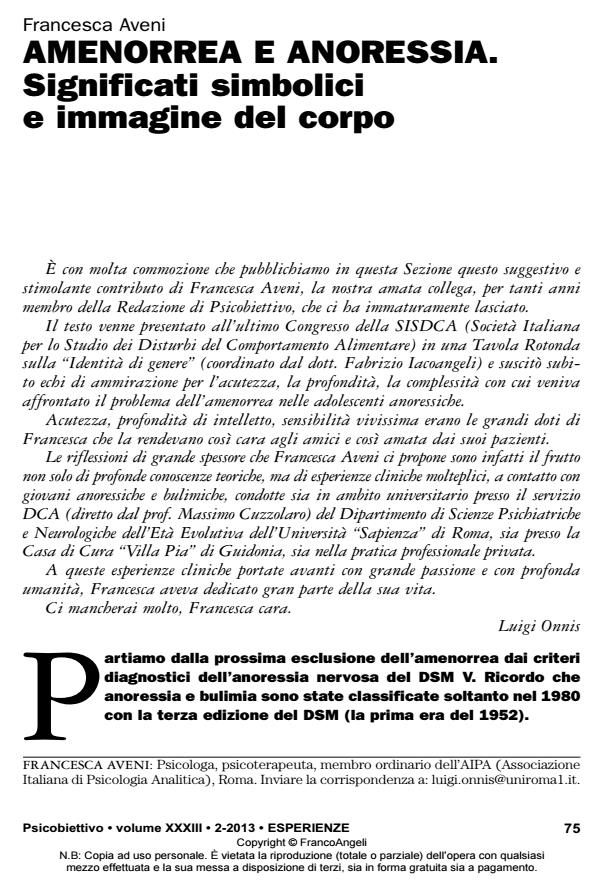Amenorrhea and anorexia. Symbolic meanings and visual of the body
Journal title PSICOBIETTIVO
Author/s Francesca Aveni
Publishing Year 2013 Issue 2013/2
Language Italian Pages 7 P. 75-81 File size 136 KB
DOI 10.3280/PSOB2013-002006
DOI is like a bar code for intellectual property: to have more infomation
click here
Below, you can see the article first page
If you want to buy this article in PDF format, you can do it, following the instructions to buy download credits

FrancoAngeli is member of Publishers International Linking Association, Inc (PILA), a not-for-profit association which run the CrossRef service enabling links to and from online scholarly content.
In the article the author sustains that attempts to measure "readiness to change" as a predictor of success or failure in psychotherapy are not warranted. Instead, attention ought to be directed to refining measurements of overall integrative functioning. The concept of motivation is useful if one looks in detail at the hierarchy of causes, from conscious to unconscious, from conflict-free to primitive, drive-determined forces, at any given stage of psychotherapy. Doing so will help to concretely distinguish between desires of experiencing continuosly both the real and the fantasy satisfactions offered by the psychotherapy, from the desire to create a real change within oneself. To describe such concepts, the main phases of an analytic therapy are reported.
Keywords: Motivation for Change; Psychoanalytic Treatment; Psychotherapy; Capacity to Change; Desire to Get Help; Diagnosis; Assessment.
Francesca Aveni, Amenorrea e anoressia. Significati simbolici e immagine del corpo in "PSICOBIETTIVO" 2/2013, pp 75-81, DOI: 10.3280/PSOB2013-002006